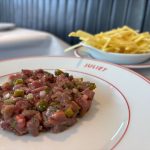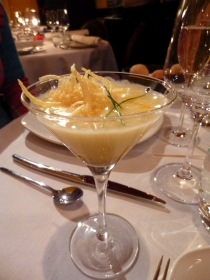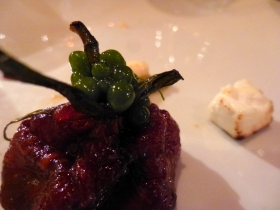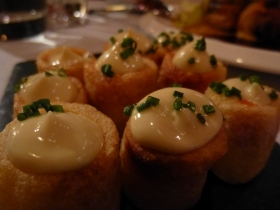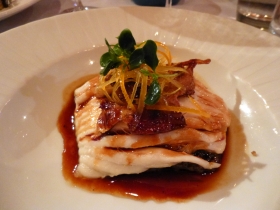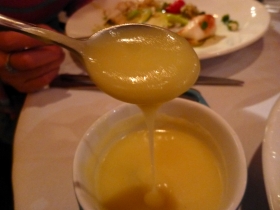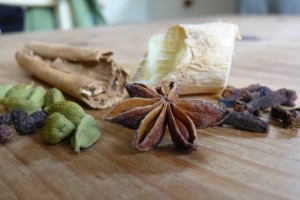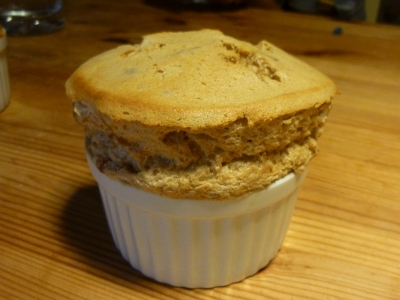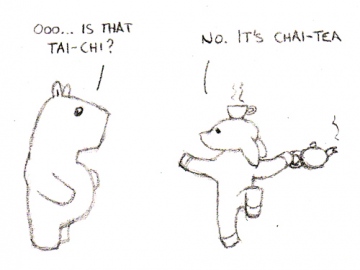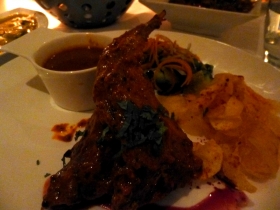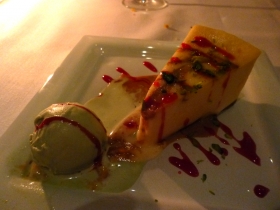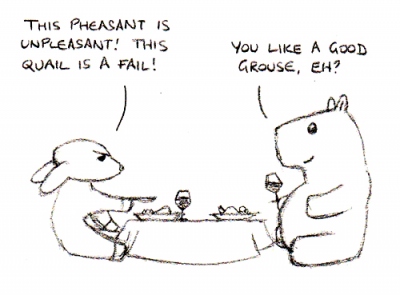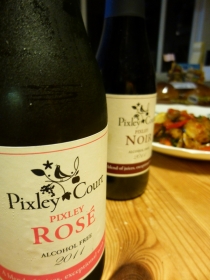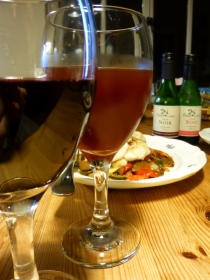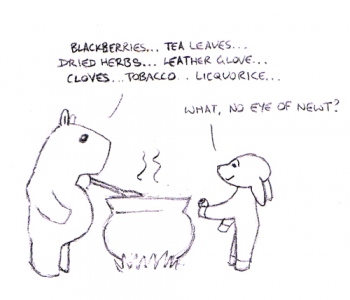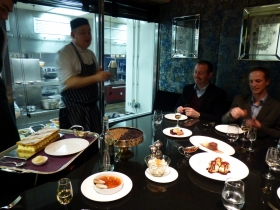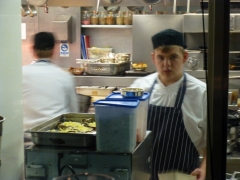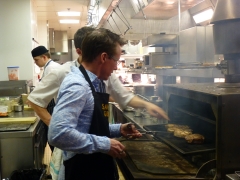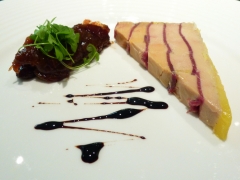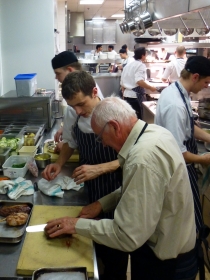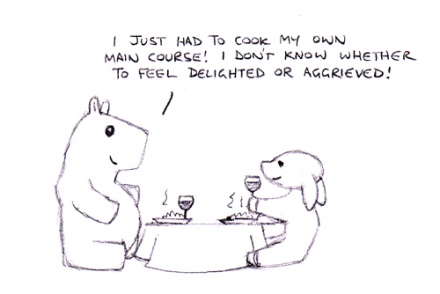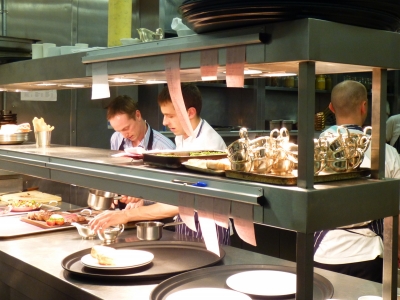This bastion of Spanish cuisine in London has been around for a few years and has a great reputation. It doesn’t really need reviewing by me, as every major critic has sung its praises at some point. So let’s call this a check-up, just to make sure they’re still dishing up the goods. I came, I saw, I laughed at the mashed potato. More on that later.
Service is welcoming, friendly and professional from the apparently entirely Spanish crew. The dining room is also vibrantly Spanish, with bold earthen reds and yellows on the walls, dark furnishings, and gaudy paintings of voloptuous figures prancing about with bulls. It’s cosy and relaxed.
We are kicked off with little sticks of crisp lollipops of Manchego cheese. Cliché by now when done with Parmesan, the extra saltiness and sharpness of the Manchego is a nice change. After that we pick tapas to share and then a main course each. No confusion here over what constitutes a “small plate” and just how many would be sensible
to order; the menu gives useful advice and the tapas are all about the same size. The wine list is another intrigue, being enormously extensive and entirely Spanish (if there were any offerings from other countries lurking at the back, I never got that far, losing myself instead in the descriptions of a dozen Spanish wine regions that I’d never heard of). Our sommelier helped us find a brilliant bottle of elegant tempranillo.The first tapas to arrive was a dish borrowed from El Bulli and elaborated; a de/re-constructed Spanish omelette. It came in a glass and would be best describes as eggy potato soup. It was nice. My problem being that I would have much preferred a piece of Spanish omelette. If you’re going to fiddle with classics, make sure your avant garde experiment at least stands up to the original.
Fear not, it got much better after that. The 8-hour slow-cooked tomatoes had magically transformed into something more akin in texture to a confit fig, with an incredibly dense and sweet flavour. This was the Barry White of tomatoes. Tiny chunks of fresh cheese cut this, as did the little basil spherifications perched on top. The salad of beetroot textures was more straight-laced and strictly for beetroot lovers, which includes me. Soused sardines came next, the sharp vinegar balanced with sweet grapes and alarmingly bitter jewels of Campari jelly. Cheese and ham croquettes were suddenly very trad after all this ingenuity, and perfectly good if lacking punch. The “New” patatas bravas were much better, crispy little cylinders of potato filled with a spicy mayonnaise. Our final tapas of grilled chicken, sweetcorn puree and aubergine crisps was so-so and the chief interest – how do you make aubergine crisp – was swapped out for some less-than-crisp fried courgette.
My main course scored a huge hit. A lovely piece of skate draped over an idiotically delicious terrine of pig’s trotter and morcilla, crispy pig’s ear and confit orange zest topping it off. The gravy was splendid and the whole dish absolutely designed to appeal to me. The other fish dish, hake cooked with chorizo, was a tasty piece of fish served with broad beans and asparagus, but the chorizo was a very underwhelming presence. Across the table was a truly delicious piece of acorn-fed pork, cooked to melting perfection.
Because our mains lacked starch we ordered sides of mashed potato, and were a little startled to receive two more dishes of potato soup. Well, when in Rome. Or Spain. Or Kensington, rather. However this piece of innovation provoked more disappointed hilarity than delight. It’s fairly fundamental: no matter how creamy you make it, mashed potato is there to soak up sauces. Not to make them more fluid.
Dessert was a little hazelnut pudding with a completely liquid interior, sort of an ultimate fondant. The coconut ice cream helped with what was unsurprisingly quite sickly. I can’t deny enjoying it though, as I emptied the dish! Maureen’s far more refreshing concoction was a Mojito jelly with a bright limey foam and a sharp little sorbet whose flavour I haven’t remembered. White chocolate ganache was good, as was the torrija; a Spanish variant on pain perdu. I hate to admit it, but the petit fours – tiny crème catalan cornets and chocolate truffles – were my favourite sweets.
At around £45 for three courses Cambio de Tercio is priced just right for a very pleasant evening out. And we did have two tapas each. In the main I’d echo other reviews: classic Spanish flavours, a clear love of their cuisine, plenty of innovation. Some dishes didn’t quite work, or worked but didn’t wow, but overall I’d certainly want to return for another meal here. No mash though.


